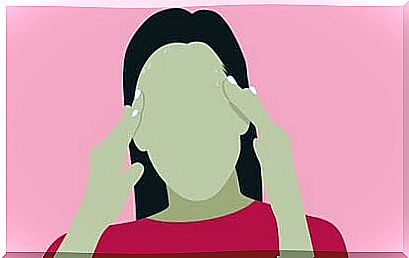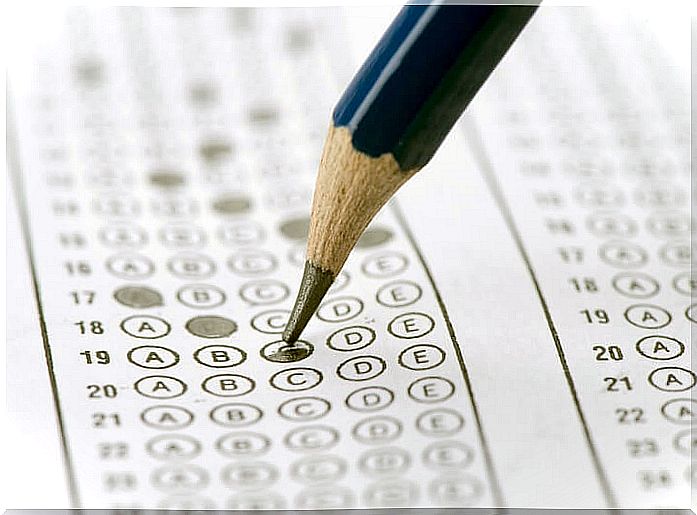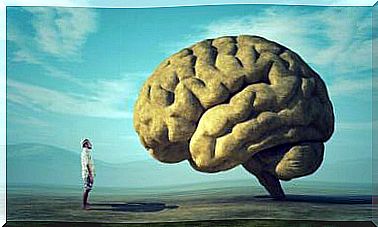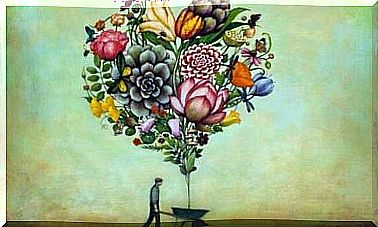The Hamilton Anxiety Scale

The Hamilton Anxiety Scale is one of the most widely used psychological questionnaires to clarify the degree of anxiety suffered by a person. It is therefore not a diagnostic instrument, but a useful and highly effective resource to assess the state of the patient, what are their psychosomatic symptoms, their fears and their cognitive processes.
One fact is striking about this interesting scale. It was designed in 1959 Max R Hamilton and today it is still one of the most used. If there was one thing that this professor of psychiatry, and later president of the British Psychological Society , was clear about, it is that not all anxiety states are the same.
He did not want to define another instrument to diagnose a disorder. It sought to define a highly rigorous resource with which to evaluate the degree of severity of anxiety in a person, also differentiating psychic anxiety from somatic anxiety due to its importance when defining the ability to control that people have over this very reality. exhausting.
Later, in 1969, Dr. Hamilton wanted to go a little further and improve the scale. Thus, among those items focused on assessing somatic anxiety, he made a distinction between somatic muscle signs and somatic sensory signs. In this way, and with that degree of refinement when designing a test as tight as possible, we already intuit an obvious clue on this subject.
Each person experiences anxiety in a particular way. There are no two similar realities, therefore, the same therapeutic strategies do not serve us all. Tests such as the one that we are going to detail below are very suitable to fully personalize the treatments based on the particular needs of each patient.

Purpose of the Hamilton Anxiety Scale
The Hamilton Anxiety Scale is a clinical assessment instrument used to measure a person’s degree of anxiety. It is useful in both children and adults. Likewise, it is an instrument that both doctors and psychiatrists can use, but being clear that it does not determine the diagnosis of a specific disorder (although it can help them).
Likewise, there is a problem with this clinical resource that health professionals are already perceiving. The Hamilton Anxiety Scale is freely accessible, anyone can download the instrument or even take the test online. Thus, it is common for many people to go to their doctors with the diagnosis made: ” I suffer from severe anxiety.”
It must be said that this is not appropriate. This type of test, like any other typical of clinical evaluation, must be done by specialized professionals. Furthermore, the Hamilton anxiety scale has another item where the researcher himself must assess in what state the patient has performed the test.
It is therefore a priority that we be rigorous in this regard, because as revealed in studies such as those carried out by psychiatrists Katherine Shear and Vander Bilt in a study, on the Hamilton anxiety scale, the interview itself during the administration of the test is key to a good diagnosis.

Items measured by the Hamilton anxiety scale
This instrument consists of 14 items. Each question has five response options, ranging from not present to very severe. Thus, a score of 17 or less indicates mild anxiety. A score that goes between 18 and 24 points would already give us a clue of a moderate state of anxiety. Finally, if we obtain a score between 24 to 30, it would indicate a severe state of anxiety.
Let’s see below those 14 items that make up the test:
- Anxious mind : constant worries, anguish when thinking or imagining certain things, always anticipating the worst …
- Tension: trembling, urge to cry, feeling of alarm …
- Fears: fear of being alone, of the dark, of something unforeseen happening …
- Insomnia
- Cognitive problems: difficulty deciding, concentrating, reflecting, memory lapses …
- Humor: discouragement, waking up with negativity and the feeling that it is going to be a bad day, irritation, bad mood
- Somatic muscle: bruxism, tremors, muscle stiffness, muscle pain, shaky voice …
- Somatic sensory: tinnitus, blurred vision, feeling hot or cold, feeling weak …
- Cardiovascular symptoms: sudden tachycardia or stitches to the chest.
- The respiratory symptoms: shortness of breath, tightness, breathlessness …
- Gastrointestinal symptoms: problems swallowing, digesting, constipation or diarrhea …
- Genitourinary symptoms: constant urination, lack of libido …
- Autonomous symptoms: dry mouth, paleness, sweating, prickly skin …
- Professional assessment: here the expert makes an assessment of how he has seen the patient in general.

To conclude, there is only one essential aspect to focus on. The Hamilton Anxiety Scale is an open access resource, we know that. We can do it if we wish. However, it is our psychiatrists or psychologists who are truly qualified to make the evaluation and diagnosis.
Later, and based on the result, one strategy or another will be carried out. The purpose of Dr. Hamilton in the 1960s was to be able to obtain an accurate and reliable profile of the level of anxiety of each person. Only then will we be able to act in the best way, in the most appropriate way.
And in these cases, assessing aspects such as the patient’s tone of voice, their posture, the clarity to understand or not the questions are key to making a correct evaluation.









